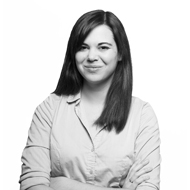Why Millennials Hate Their Least Expensive Health Care Option
Millennials want their parents' old health insurance plan. A new survey from Bankrate found that almost half of 18-to-29-year-olds prefer a health plan with a lower deductible and higher premiums—meaning millennials would rather pay more out of their paycheck every month and pay less when they go to the doctor. Compared to other age groups, millennials are the most likely to prefer plans with higher premiums.
That surprised Bankrate insurance analyst Doug Whiteman. "One would assume people in this age group were not likely to get sick, so they’d choose the cheapest possible plan just to get some insurance," he says.
In theory, millennials are perfect candidates for high-deductible plans. The conventional wisdom is that since young and healthy people tend to have very low health-care costs, they should opt for a higher deductible and keep more of their paychecks.
If, for example, you go to the doctor only for free preventive care, switching from the average employer-sponsored traditional PPO plan to the average high-deductible health plan would save a single person $229 a year in premiums, according to the Kaiser Family Foundation's 2014 data.
Millennials shopping in the new health insurance marketplace last year didn't want the cheapest plans either. According to the Department of Health and Human Services, more than two-thirds of 18-to-34-year-olds chose silver plans, which have mid-level premiums and deductibles. Only 4% picked catastrophic plans, the ones with the lowest premiums and out-of-pocket limits of around $6,000.
Why Millennials Are Risk Averse
Why are millennials choosing to pay more for health care? Turns out the "young invincibles" don't feel so invincible after all, says Christina Postolowski, health policy manager at a youth advocacy group called—as it happens—Young Invincibles. "Millennials are risk-averse and concerned about their out-of-pocket costs if something happens to them," Postolowski says.
High-deductible plans saddle young adults with risk they can ill afford. According to Kaiser, the average employer-sponsored high-deductible plan made singles pay $2,215 out-of-pocket in 2014 before they ever saw a co-pay.
Yet according to Bankrate, 27% of 18-to-29-year-olds have no emergency savings. A $2,200 bill could sink them. Indeed, Bankrate found that the two groups most likely to prefer a low-deductible plan are millennials and those with incomes between $30,000 and $49,999.
"Young people don’t have money in a bank account to pay for high deductibles," Postolowski says. "Our generation is carrying $1.2 trillion in student loan debt. An unexpected medical incident isn’t just physical pain. It can be economic pain too."
That's why Bankrate's Whiteman thinks millennials are being "really smart."
"One of the concerns I have is too many people might only look at the price and neglect the fact that some of these plans that seem really cheap can come with deductibles as high at $6,000," he says. "That’s a significant amount of money out of your own pocket."
Fighting the Tide
Some young workers, however, have little choice, or won't soon. Employers are increasingly shifting to health plans that make workers shoulder more of the costs. Towers Watson found that 74% of employers plan to offer high-deductible plans in 2015, and 23% of them will make it the only option.
Plus, across all employer plans, you have to pay more out-of-pocket than in years past. According to Kaiser, the average deductible for single coverage in 2014 was $1,217, up 47% from five years ago. The generous, low-deductible health plan your parents once had probably won't be available to you.
How to Make the Best of It
If you end up in a high-deductible plan, learn to make the most of the tax-free savings plan that goes with it—a health savings account (HSA). Yeah, a monthly HSA contribution is one more recurring expense on top of your student loan payments, car payments, rent, and (hopefully) 401(k) contributions. But at least this one can give you the peace of mind that you'll have the funds to cover a health emergency.
Here's how an HSA works: You make contributions with pre-tax income. The money carries over year-to-year. You can invest the funds in your HSA, the way you invest the money in your 401(k), and the account will grow tax-free. If you need the money for medical expenses, you withdraw it, again, tax-free. Or, if you stay healthy and have money leftover at age 65, you're free to spend it on anything.
You qualify for an HSA if your deductible for single coverage is $1,300 or more, or $2,600 for family coverage (and if you're not claimed as a dependent on someone else's tax return). And your company might help you out. Some employers make contributions to their employees' HSAs, of $1,006 a year on average, according to Kaiser.
For ultimate peace of mind, save enough to cover your entire deductible. But if you're feeling pinched, at least put away the money you saved on premiums by switching from a more expensive plan.
More:
- Should I choose a high-deductible plan, and what should I do if I have no choice?
- Why do I need an emergency fund, and how much do I need?
- How can I reduce my tax bill?
Read next: 4 Ways Millennials Have It Worse Than Their Parents
